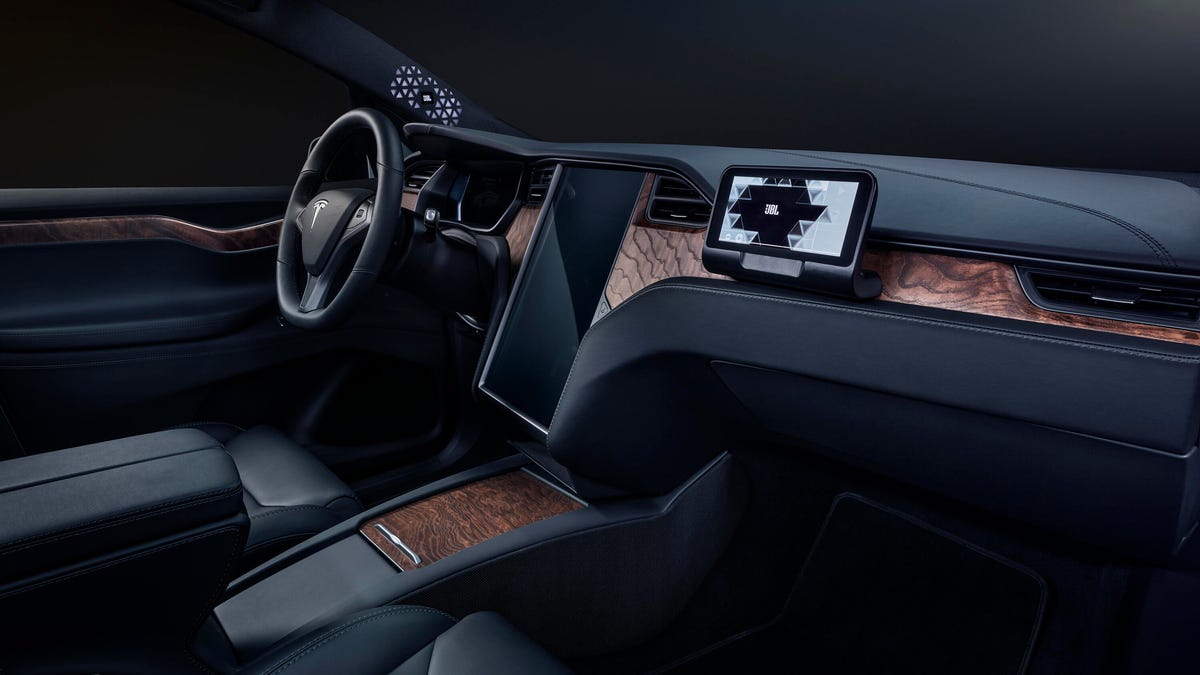Harman comes to CES 2020 with slick new audio tech for future EVs
Not only are new features on the docket, there's a focus on improving component efficiency, too.
While auto shows are all about glitz, glamor and fully baked production vehicles, the automotive presence at CES 2020 dives a little deeper into the nuts and bolts, the parts behind the cars. At this year's conference, supplier Harman has rolled out a whole suite of technologies for future EVs that could not only boost efficiency, but also improve the in-car experience for drivers and passengers.
Harman on Monday unveiled its EV Plus+ (EV Plus? EV Plus Plus?) Solutions suite. Meant for integration into future electric vehicles, these upgrades focus on adding features and efficiency to leapfrog over current audio and communications offerings.
There are three major parts to EV Plus+. The first is something the company calls Ecotect, which relates to the actual hardware in the car. Harman claims that it can whip up an audio system that bumps just as hard as any good system currently on the market, but with half the parts. Not only does this reduce cost and assembly complexity, it can directly affect the cars themselves -- fewer parts means less weight and lower power consumption, which means there will be more electrons freed up to, you know, power the vehicle.
Next up is a bit of tech that seems just a little more futuristic in operation. Harman refers to it as "software-enabled branded audio," and it works with the sound systems under the Ecotect umbrella. Basically, it will allow owners to upgrade their in-car audio entirely through software at any point during the car's life cycle, whether it's at the dealership or a couple years down the road.
It's unclear how it works at the moment, likely through enabling or disabling various components while applying brand-specific hardware tuning, but it's a pretty neat idea. Harman owns several audio brands, including JBL and Mark Levinson, so having a variety of audio tuning upgrades on offer could offer some unique personalization that's not available on modern new vehicles.
Tying all this stuff together is the third piece in the puzzle, Harman's Audio Marketplace. Running on Harman's own cloud architecture, consider the Audio Marketplace to be a big centralized store where owners can upgrade and further individualize their electric vehicles.
Here's where things get interesting. Harman obviously didn't list every single thing available in the marketplace, as it's still largely conceptual, but it did highlight a few key features that seem intriguing. For example, Harman partnered with the National Park Foundation to create a series of downloadable audio files that capture the sounds of places like Yosemite Falls or Mammoth Dome, bringing a bit of that all-natural calm to a hectic commute.
See also
- CNET's 20 favorite products of CES 2020
- All the cool new gadgets at CES 2020
- Full coverage of CES 2020
The sounds of national parks are just the start. Harman's Audio Marketplace can also theoretically improve the driving experience in other ways. Voice-Sensing Volume Fade can automatically lower the audio volume when it detects a conversation. Halosonic Road Noise Cancellation can reduce road noise in the cabin using acoustic noise-canceling tech.
Some of this tech seems pretty pie-in-the-sky, but Harman isn't forcing consumers to wait a decade or two to take advantage of it. Harman claims that these solutions are available to automakers as early as today, meaning they might just show up in your next new car. Most folks think of EV efficiency as largely relating to the battery and powertrain, but in reality, every part of the car can help contribute to its overall efficiency.


